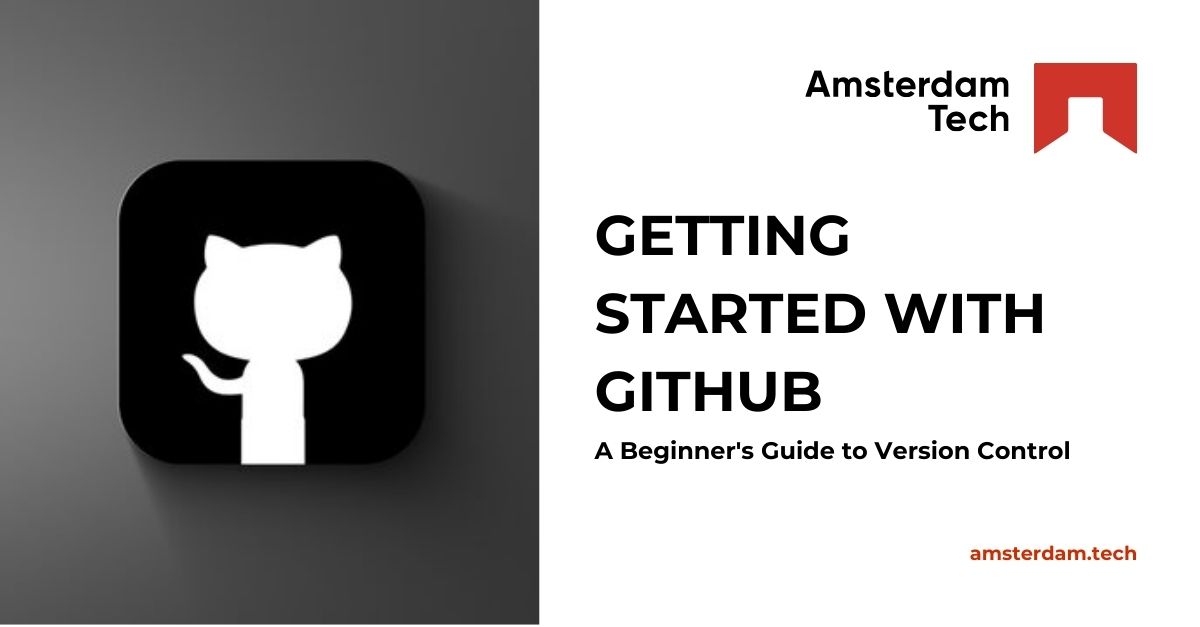
Getting Started with GitHub
A Beginner’s Guide to Version Control
In the world of software development, version control is an indispensable tool that helps teams collaborate effectively, track changes, and manage codebases efficiently. GitHub, a popular platform for hosting Git repositories, has become synonymous with version control and is widely used by developers around the globe. If you’re new to GitHub and version control, this beginner’s guide will walk you through the fundamentals and get you started on your journey to becoming proficient with Git and GitHub.
Understanding Version Control
Version control is a system that records changes to files over time, allowing you to revert to previous versions, track modifications, and collaborate with others seamlessly. It provides a structured way to manage codebases, ensuring consistency, reliability, and transparency throughout the development process.
Introducing Git and GitHub
Git is a distributed version control system that enables developers to manage codebases locally on their machines. GitHub, on the other hand, is a cloud-based platform that hosts Git repositories, facilitates collaboration, and provides additional features such as issue tracking, project management, and code review tools.
Setting Up Your GitHub Account
To get started with GitHub, the first step is to create an account. Simply visit the GitHub website (github.com) and sign up for a free account using your email address. Once registered, you can customize your profile, set up your preferences, and explore the platform’s features.
Installing Git
Before you can start using Git and GitHub, you’ll need to install Git on your local machine. Git is available for Windows, macOS, and Linux operating systems. You can download the Git installer from the official Git website (git-scm.com) and follow the installation instructions provided for your platform.

Creating Your First Repository
A repository, or “repo” for short, is a central storage location for your project files and version history. To create a new repository on GitHub, navigate to your profile and click on the “New” button. Give your repository a name, optionally add a description, and choose whether it should be public or private. Once created, you’ll have an empty repository ready to be populated with files.
Cloning a Repository
To work with a repository locally on your machine, you’ll need to clone it from GitHub. Cloning creates a copy of the repository on your local filesystem, allowing you to make changes, commit them, and push them back to GitHub. To clone a repository, navigate to its GitHub page, click on the “Code” button, and copy the repository’s URL. Then, open your terminal or command prompt, navigate to the desired directory, and run the git clone command followed by the repository URL.
Making Changes and Committing Them
Once you’ve cloned a repository, you can start making changes to its files. Add new files, modify existing ones, or delete them as needed. After making changes, you’ll need to stage them for commit using the git add command and then commit them to the repository using the git commit command. Be sure to provide a descriptive commit message that summarizes the changes you’ve made.
Pushing Changes to GitHub
After committing your changes locally, you’ll want to push them to GitHub to synchronize your local repository with the remote repository hosted on the platform. To push changes, use the git push command followed by the name of the remote repository and the branch you’re working on. By pushing changes to GitHub, you make them accessible to other collaborators and ensure that your work is backed up in the cloud.
Collaborating with Others
GitHub’s collaborative features make it easy to work with other developers on shared projects. You can invite collaborators to your repositories, review each other’s code, and manage contributions using pull requests. Pull requests allow you to propose changes, discuss them with collaborators, and merge them into the main branch of the repository once they’re approved.
Conclusion
Version control is a fundamental aspect of modern software development, and GitHub provides a user-friendly platform for managing your codebases, collaborating with others, and contributing to open-source projects. By following this beginner’s guide, you’ve taken the first steps towards mastering Git and GitHub. Keep exploring the platform’s features, experimenting with different workflows, and honing your version control skills to become a proficient developer in the GitHub ecosystem. Happy coding!
